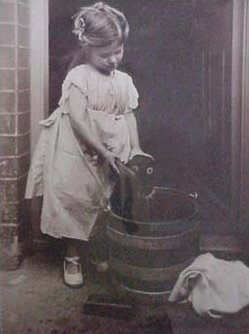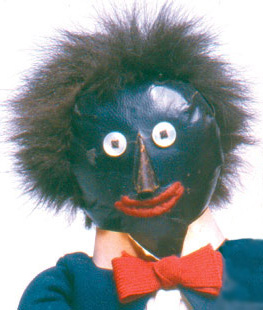
|
Golliwogg.co.uk |
Golliwogg.co.uk
|
|||||||||||||
|
Golliwog History |
|||||||||||||
|
The Golliwog (originally spelled Golliwogg) began life as a story book character created by Florence Kate Upton. Upton was born in 1873 in Flushing, New York, to English parents who had emigrated to the United States in 1870. She was the second of four children. When Upton was fourteen, her father died and, shortly thereafter, the family returned to England. For several years she honed her skills as an artist. Unable to afford art school, Upton illustrated her own children's book in the hope of raising tuition money. In 1895, her book, entitled "The Adventures of Two Dutch Dolls and a Golliwogg", was published in London. Upton drew the illustrations, and her mother, Bertha Upton, wrote the accompanying verse. The book's main characters were two Dutch dolls, Peg and Sarah Jane, and the Golliwogg. The story begins with Peg and Sara Jane, on the loose in a toy shop, encountering "a horrid sight, the blackest gnome." The little black "gnome" wore bright red trousers, a red bow tie on a high collared white shirt, and a blue swallow-tailed coat. He was a caricature of American black faced minstrels - in effect, the caricature of a caricature. She named him Golliwogg.
Nevertheless, "The Adventures of Two Dutch Dolls and a Golliwogg" was immensely popular in England, and Golliwogg became a national star. For the next fourteen years, Bertha and Florence Upton created a total of thirteen books featuring Golliwogg and his adventures, travelling to such "exotic" places as Africa and the North Pole, accompanied by his friends, the Dutch Dolls. In those books the Uptons put the Golliwogg first in every title. Growing popularity...The Uptons did not copyright the Golliwogg, and the image entered into public domain. The Golliwogg name was changed to Golliwog, and he became a common toyland character in children's books. The Upton Golliwogg was adventurous and sometimes silly, but, in the main, gallant and "lovable," albeit, unsightly. Later Golliwogs were often unkind, mean-spirited, and even more visually hideous. The earliest Golliwog dolls were rag dolls made by parents for their children. Many thousands were made. During the early twentieth century, many prominent doll manufacturers began producing Golliwog dolls. The major Golliwog producers were Steiff, Schuco, and Levin, all three Germany companies, and Merrythought and Deans, both from Great Britain.
During the first half of the twentieth century, the Golliwog doll was a favourite children's soft toy in Europe. Only the Teddy Bear exceeded the Golliwog in popularity. Small children slept with their black dolls. Many White Europeans still speak with nostalgic sentiment about their childhood gollies. Sir Kenneth Clark, the noted art historian, claimed that the Golliwogs of his childhood were, "examples of chivalry, far more persuasive than the unconvincing Knights of the Arthurian legend." The French composer Claude Debussy was so enthralled by the Golliwogs in his daughter's books that one movement of his Children's Corner Suite is entitled "The Golliwog's Cakewalk." The Golliwog was a mixture of bravery, adventurousness, and love - for White children. A national institution
Over the last seventy years Robertson's must have given away (in return for 'Golly' tokens collected from their products) hundreds of thousands of Golly items. A good proportion of these are Golly pins (or brooches), which were the first type of premiums they produced, and they are still making today. Serious Robertson's collectors may have thousands in their collections. Other Robertson's Golly memorabilia includes such things as clocks, watches, tableware, porcelain figurines, jewelry, aprons, knitting patterns, dolls, pencils, erasers, and, of course, the Golly tokens themselves. Nevertheless,Robertson's Golly badges still remain highly collectable, with the very rarest sometimes selling for more than £1,000, and even comparatively common and recent badges being worth £2.00–£3.00. |
|||||||||||||


